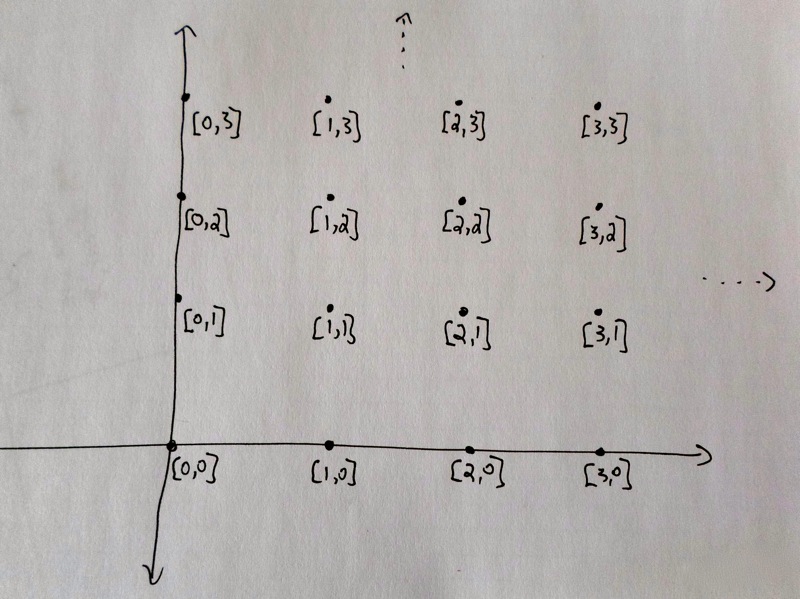The key insight is to display the elements of \(\mathbb{N}\times\mathbb{N}\) in a clever way, and use this to make the list. Remember in the overview we mentioned we can think of this set as a grid on a plane.

Then according to this assignment rule, the beginning of our list would look something like the following.
\[0 \leftrightarrow [0,0]\\ 1 \leftrightarrow [1, 0]\\ 2 \leftrightarrow [0, 1]\\ 3 \leftrightarrow [0, 2]\\ 4 \leftrightarrow [1, 1]\\ 5 \leftrightarrow [2, 0]\\ 6 \leftrightarrow [3, 0]\\ 7 \leftrightarrow [2, 1]\]
By looking at the picture, and the list, we can convince ourselves that every element in \(\mathbb{N}\) is getting assigned to exactly one element of \(\mathbb{N}\times\mathbb{N}\), and everything in \(\mathbb{N}\times\mathbb{N}\) is hit at some point. Therefore we have a one-to-one correspondence! Thus \(|\mathbb{N}\times\mathbb{N}| = |\mathbb{N}|\).

